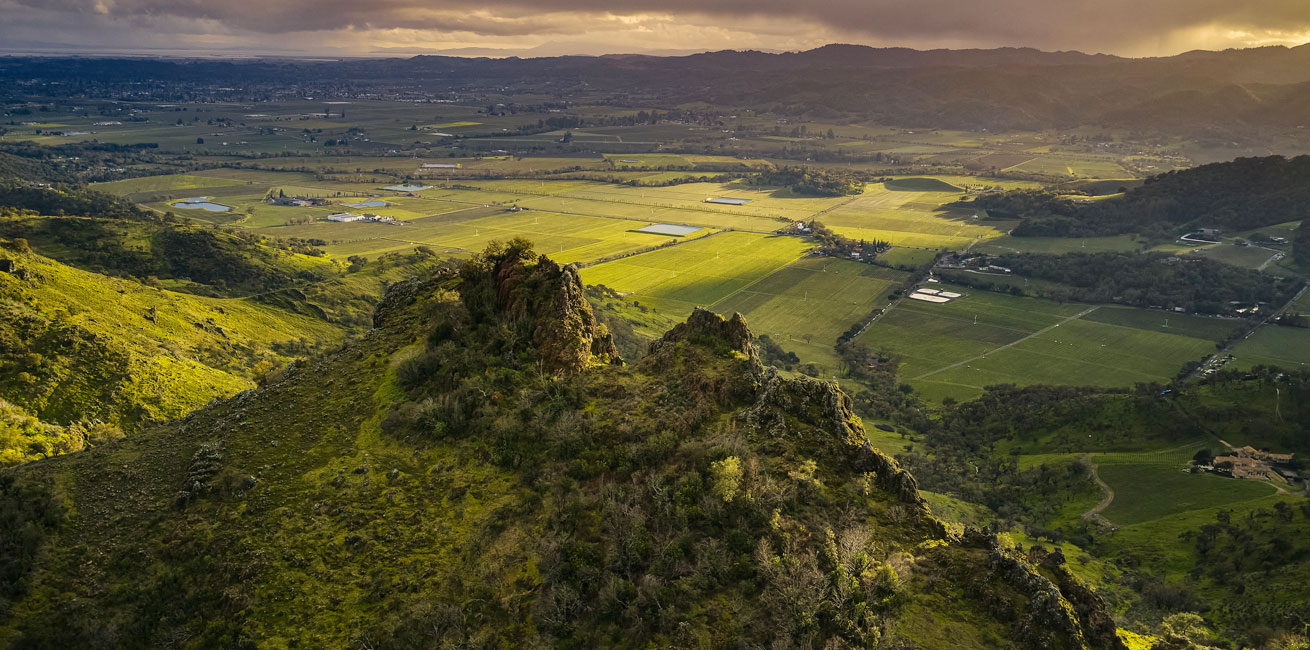
Our Story
World renowned for our Cabernet Sauvignons and the region's breathtaking beauty, explore our legendary wines, discover our history and plan your next visit.
Comprised of only 2,700 acres, with approximately 1,200 planted, the Stags Leap District is known worldwide for its Cabernet Sauvignon. In fact, the District is comprised of over 80% Cabernet Sauvignon and upwards of 90% with red Bordeaux blending varietals included. Benefiting from cool Pacific breezes, long, dry summer days and unique volcanic soils with overlays of bale loam, the Stags Leap District produces wines critically acclaimed for their power and grace, lush fruit and soft tannins with complex layers of flavor.
Cabernet Sauvignon
In 1961, a quiet renaissance began when pioneer Nathan Fay planted the region's first Cabernet Sauvignon. At the time, conventional wisdom held that the area was too cool for Cabernet Sauvignon and when Fay planted this vineyard there were only 800 acres of Cabernet planted in the entire United States. By comparison there are roughly 95,000 acres in California and 22,000 acres of Cabernet Sauvignon in Napa Valley. Fay sold most of his grapes to Joseph Heitz, and it was the Heitz Cellar "Fay Vineyard" Cabernet Sauvignon, one of the Valley's first vineyard-designated wines, that first brought attention to the region followed by the 1976 famed Judgement of Paris tasting where a Stag's Leap Wine Cellars Cabernet Sauvignon took top honors. The Stags Leap District American Viticutural Area (AVA) has a mere 1250 planted acres, 90% of which are the Bordeaux varietals.
To honor Nathan Fay's remarkable vision and contribution to what would eventually become the Stags Leap District sub-appellation, the Stags Leap District Winegrower, in 2000 for his 90th birthday, was privileged to present Nathan with a fellowship at UC Davis in his name. With an initial endowment of $10,000, each year a graduate student in the School of Viticulture and Enology is awarded the Nathan Fay Fellowship to assist with expenses to pursue their studies and research.
Power and Grace
A turning point in the recognition of Stags Leap District wines as something special came in 1976. At a blind tasting held in Paris, nine French judges awarded first place to the 1973 Stag's Leap Wine Cellars Cabernet Sauvignon over such formidable French producers as Mouton-Rothschild and Haut Brion. The staggering impact of this event was reinforced ten years later when exactly the same wines were tasted a second time. The winner was yet another wine from the Stags Leap District: the 1972 Clos du Val Cabernet Sauvignon.
© 2025 Stags Leap District Winegrowers Association. All rights reserved.